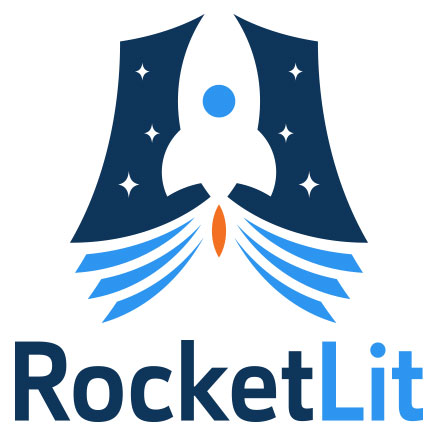In Mosa Mack’s Earthquakes and Volcanoes unit, students are led through a progression of three inquiry lessons that focus on the interaction of tectonic plates, the causes of Earthquakes and Volcanoes, and the impact of these events.
- Lesson 1
Solve: A Rumbling Earth Mystery + Vocabulary Mind Map
Students contextualize Earthquakes and Volcanoes vocabulary in a mind map before helping Mosa Mack solve the mystery of how some bakers in Cake County could feel an earthquake and others could not. By the end of The Solve, students discover that earthquakes and volcanoes have important similarities and differences. (75 mins)
- Lesson 2
Make: Lab Stations: Tectonic Plates Interacting
Students interact with a series of stations to model different ways in which tectonic plates interact. (100 mins)
- Lesson 3
Engineer: Engineer a Solution to Protect People from the Effects of Earthquakes or Volcanoes.
Students engineer a solution to protect our communities from the effects of earthquake or volcanic events. (120 mins)
- Next Generation Science Standards
- MS-ESS2-2
- Construct an explanation based on evidence for how geoscience processes have changed Earth's surface at varying time and spatial scales. [Clarification Statement: Emphasis is on how processes change Earth’s surface at time and spatial scales that can be large (such as slow plate motions or the uplift of large mountain ranges) or small (such as rapid landslides or microscopic geochemical reactions), and how many geoscience processes (such as earthquakes, volcanoes, and meteor impacts) usually behave gradually but are punctuated by catastrophic events. Examples of geoscience processes include surface weathering and deposition by the movements of water, ice, and wind. Emphasis is on geoscience processes that shape local geographic features, where appropriate.]
- MS-ESS3-2
- Analyze and interpret data on natural hazards to forecast future catastrophic events and inform the development of technologies to mitigate their effects. [Clarification Statement: Emphasis is on how some natural hazards, such as volcanic eruptions and severe weather, are preceded by phenomena that allow for reliable predictions, but others, such as earthquakes, occur suddenly and with no notice, and thus are not yet predictable. Examples of natural hazards can be taken from interior processes (such as earthquakes and volcanic eruptions), surface processes (such as mass wasting and tsunamis), or severe weather events (such as hurricanes, tornadoes, and floods). Examples of data can include the locations, magnitudes, and frequencies of the natural hazards. Examples of technologies can be global (such as satellite systems to monitor hurricanes or forest fires) or local (such as building basements in tornado prone regions or reservoirs to mitigate droughts).]
- Inquiry Scale
- Each lesson in the unit has an Inquiry Scale that provides directions on how to implement the lesson at the level that works best for you and your students.
- “Level 1” is the most teacher-driven, and recommended for students in 4th-5th grades. “Level 4” is the most student-driven, and recommended for students in 7th-8th grades.
- For differentiation within the same grade or class, use different inquiry levels for different groups of students who may require additional support or an extra challenge.
- Common Misconceptions
- Learners initially confuse the relationship between the terms “crust” and “tectonic plates.” Emphasize the crust consists of the tectonic plates.
- Learners initially think of a “fault line” as only where the plates meet (the boundary), but emphasize to learners using the mindmap, that any cracks in the tectonic plate caused by its movements are considered “fau lt lines.” All plate boundaries are faults; but not all faults are plate boundaries.
- Learners initially conceptualize tectonic plate movements as happening instantly, but they really happen over very long periods of time. Emphasize to students that plates move at about the rate of fingernail growth. These sudden tectonic events that we discuss in this unit are a rapid release of pressure and tension that has built up over a very long period of time.
- Vocabulary
- Crust
- Magma
- Lava
- Earthquake
- Fault Line
- Tectonic Plate
- Volcano
- Content Expert
- Eric Pyle, PhD
Professor, Department of Geology & Environmental Science
James Madison University
- Leveled Reading
* To give our users the most comprehensive science resource, Mosa Mack is piloting a partnership with RocketLit, a provider of leveled science articles.
- From Liquid Rock To Solid Earth
This article serves to introduce volcanoes and explain that the most likely place to see a volcano on Earth is around the Ring of Fire. In addition, volcanic fissures can be found in the middle of the oceans, slowly spewing up magma and creating new land. KER-POW!
RocketLit serves tailored Science reading to every student in your classroom at their independent reading level.
- How To Shake Like An Earthquake
Earthquakes can be super scary, but understanding how everything shakes out may help you be safer when one strikes. This article discusses the 2 main types of waves in an earthquake and the tool that we use to measure the strength and epicenter of the shaking.
RocketLit serves tailored Science reading to every student in your classroom at their independent reading level.
- Do All Volcanoes Go BOOM?
This article outlines 3 of the basic volcanic shapes: Cinder cones, shield and composite. Students read a brief description of each type of volcano and read about what an eruption can mean for both large and small volcanoes.
RocketLit serves tailored Science reading to every student in your classroom at their independent reading level.
- Buildings vs Earthquakes
In this article, students read about a fight between a building and earthquake wave to demonstrate few ways that we design buildings to withstand earthquake waves. The article defines the terms 'absorb' and 'transmit' as well as talks about the benefits to base isolation and flexibility in building design.
RocketLit serves tailored Science reading to every student in your classroom at their independent reading level.



